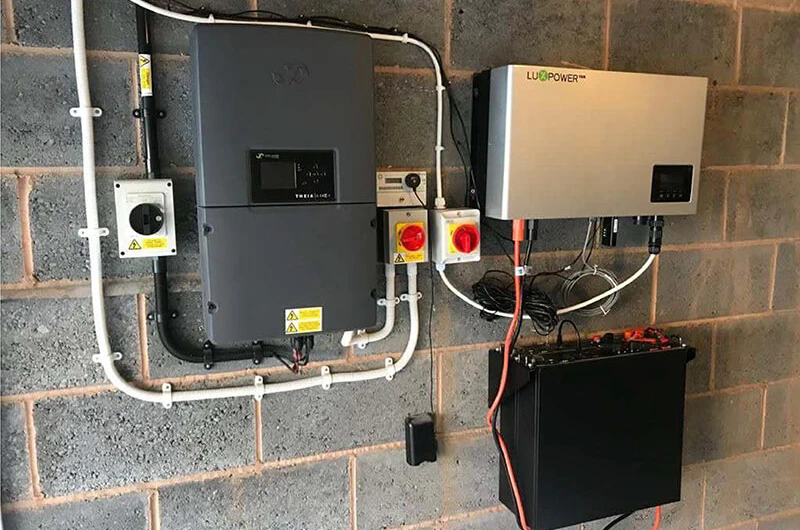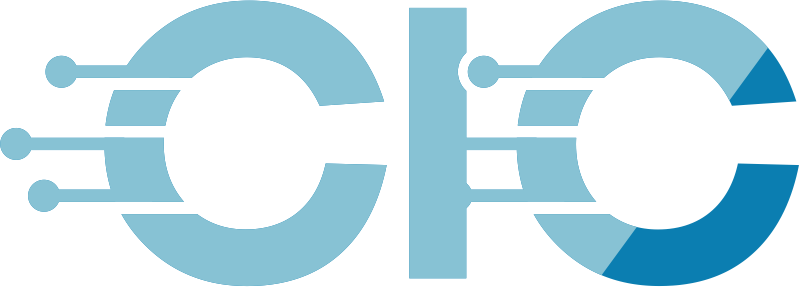Introduction
When choosing a backup power source or optimizing energy usage for your home, an inverter is an essential component. There are two main types of inverters available on the market: solar inverters and regular inverters. What are the differences between them? Which one is best suited for your home? This article compares the features, advantages, and applications of both types of inverters to help you make the best decision.

What is a Solar Inverter?
A solar inverter is a device specifically designed for solar power systems. Its primary function is to convert the direct current (DC) generated by solar panels into alternating current (AC) for household appliances.
Key Features of Solar Inverters:
- Optimized Solar Utilization: Maximizes the energy conversion efficiency of solar panels.
- Grid-Tied or Off-Grid Functionality: Some solar inverters support grid-tied mode, allowing surplus energy to be fed back into the grid, or they can operate in off-grid mode.
- Smart Monitoring: Many modern solar inverters come with intelligent monitoring systems that allow real-time tracking of power generation and energy usage.
What is a Regular Inverter?
A regular inverter is primarily used for backup power, converting DC from a battery into AC to provide electricity during power outages.
Key Features of Regular Inverters:
- Battery-Powered: Requires a battery for operation and cannot directly utilize solar energy.
- Lower Cost: More affordable upfront compared to solar inverters.
- Suitable for Short-Term Outages: Mainly used for temporary power supply, ideal for areas with frequent but short power cuts.
Solar Inverter vs. Regular Inverter: A Comparative Analysis
| Feature | Solar Inverter | Regular Inverter |
|---|---|---|
| Power Source | Solar Panels | Battery |
| Purpose | Continuous Power, Energy Saving | Backup Power |
| Smart Monitoring | Yes | No |
| Grid-Tied Capability | Yes (Some Models) | No |
| Cost | Higher | Lower |
| Environmental Friendliness | High | Low |
Key Differences Analysis:
MPPT Technology (Maximum Power Point Tracking)
A solar inverter utilizes real-time voltage and current adjustments to ensure that photovoltaic panels always operate at peak efficiency. In contrast, a conventional inverter lacks this functionality, potentially resulting in energy losses exceeding 20%.
Grid Interaction Capability
A grid-tied solar inverter can feed excess electricity back into the grid, allowing users to earn credits on their electricity bills. In comparison, a conventional inverter only supports one-way power consumption.
Safety and Compliance
Solar inverters must meet stringent certifications such as UL 1741 and include anti-islanding protection, which automatically shuts down the system when the grid loses power. Conventional inverters may lack such safety features.
Which One is Right for Your Home?
- If you want to reduce electricity bills and utilize renewable energy, a solar inverter is the better choice. Although it requires a higher initial investment, it leads to long-term savings and is environmentally friendly.
- If you need a backup power source for emergencies, a regular inverter is a more economical option, especially in areas with frequent but short power outages.

Home Selection Guide: 4 Key Decision Factors
- What Are Your Electricity Needs?
- High-energy households (e.g., air conditioning, pool pumps): Opt for a high-capacity grid-tied solar inverter (e.g., 8kW or higher) paired with a smart meter to manage peak consumption.
- Off-grid/emergency scenarios: A conventional inverter combined with batteries may be more cost-effective but comes with lower energy efficiency.
- Budget & Long-term Returns
- Upfront cost: Solar inverters ($1000–$3000) > Conventional inverters ($200–$800).
- Long-term savings: Assuming a household electricity bill of $150 per month, a high-efficiency solar system can break even in 5–7 years, with near-zero electricity costs afterward.
- Future Scalability
- Choose a solar inverter that supports modular expansion (e.g., Huawei SUN2000 or Tesla Powerwall) to easily add solar panels or energy storage. Conventional inverters typically lack upgrade options.
- Brand & After-Sales Service
- Recommended solar inverter brands: Fronius, SMA, Enphase (known for high efficiency and 25-year warranties).
- Best value conventional inverters: Renogy, AIMS Power.
Frequently Asked Questions (FAQ)
Q1: Can a conventional inverter replace a solar inverter?
Not recommended! Conventional inverters cannot handle photovoltaic panel voltage fluctuations, which may lead to equipment damage or even fire hazards.
Q2: What is a hybrid inverter? Is it suitable for homes?
A hybrid inverter is compatible with both solar panels and batteries, making it ideal for areas with frequent power outages or households seeking energy independence (e.g., Texas residents).
Q3: Does government funding cover inverter costs?
Yes! The U.S. federal Investment Tax Credit (ITC) covers 26% of the total solar system cost, including the inverter, with additional state-level incentives available.

